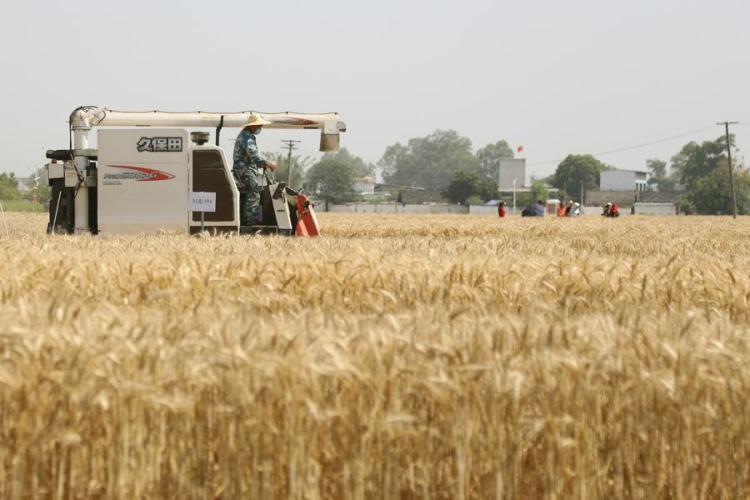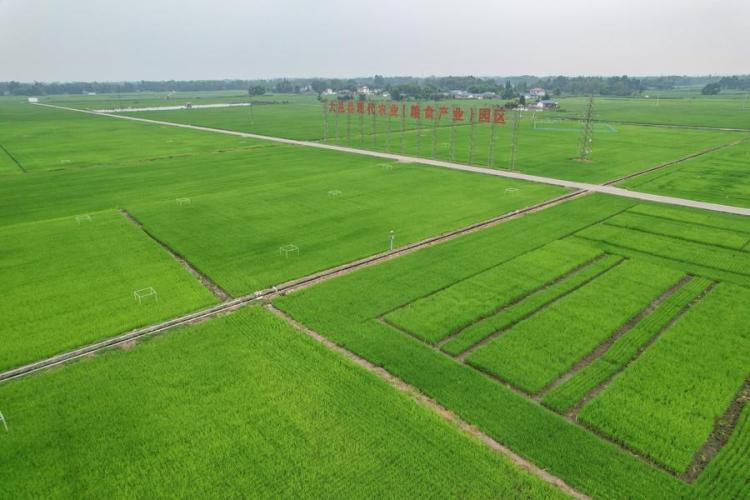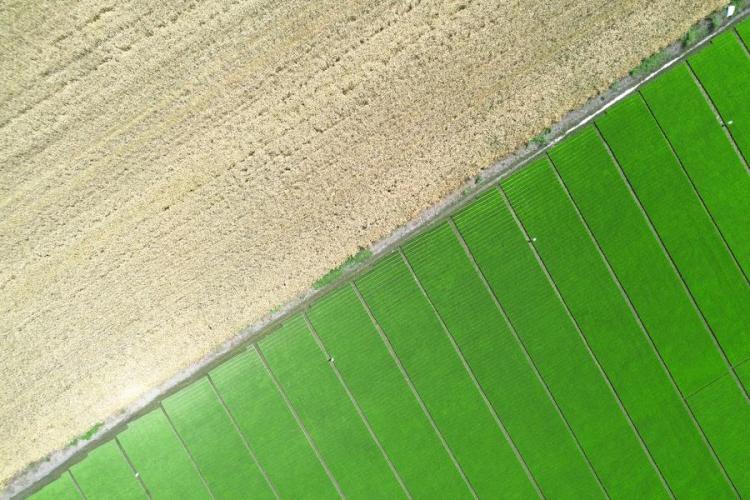* Major agricultural provinces in southwest China, such as Sichuan, Yunnan and Guizhou, have effectively boosted grain output and promoted sustainable agriculture, providing a solid foundation for national food security.
* Sichuan, a major grain-producing province known as the "granary" of western China, achieved a 26-year-high grain output in 2023, reaching 35.94 million tonnes.
* As China actively promotes smart agriculture, high-tech farming equipment such as automatic rice transplanters, harvesters and drones have injected new vitality into the country's western granary.
CHENGDU, Aug. 9 (Xinhua) -- In recent years, major agricultural provinces in southwest China, such as Sichuan, Yunnan and Guizhou, have bent every effort to boost grain production through optimized and innovative production methods.
By introducing advanced agricultural technologies and improving land management, these regions have effectively boosted grain output and promoted sustainable agriculture, providing a solid foundation for national food security.
HIGH-STANDARD FARMLAND
Sichuan, a major grain-producing province known as the "granary" of western China, achieved a 26-year-high grain output in 2023, reaching 35.94 million tonnes.
Through comprehensive efforts, including improvements to farmland and seed quality, the province has provided substantial support to the nation's food supply.
Farmland is crucial for the cultivation of crops. The improvement of high-standard farmland in Sichuan has unlocked significant agricultural potential and made farm work more efficient.

Wang Yuanwei, a successful farmer from Yongfeng Village on the southern edge of the Chengdu Plain, recalls a time when each household farmed fields dispersed across various locations. Locals referred to these plots as "palm-sized fields" or "chicken-claw fields."
Yongfeng is part of the core area of China's western granary. Thanks to the development of high-standard farmland, once scattered and irregular plots have been transformed into well-organized agricultural land.
"These measures have enabled fully mechanized planting," said Luo Jianbin, a 49-year-old farmer who manages over 133 hectares of farmland in Qionglai City.
"The full mechanization of operations, including sowing, transplanting and fertilizing, has improved efficiency, reducing seed production costs and making our work much easier," Luo said.
In 2023, Sichuan's high-standard farmland area totaled 4.2 million hectares. Data from the provincial agriculture and rural affairs department showed that Sichuan had 34,500 large-scale grain farming households in 2023, each cultivating plots of 2 hectares or more, marking a 26.4 percent increase from 2022.
UPGRADED SEED INDUSTRY
Sichuan is a leading province in China's seed industry, serving as a major breeding and production base. Many of the seed varieties cultivated by farmers are the result of technological research and development in the industry.
The State Key Laboratory of Crop Gene Exploration and Utilization in Southwest China, under Sichuan Agricultural University, has played a significant role in these efforts.
Given less sunlight, high temperature and high humidity conditions in southwest China, the laboratory focuses on scientific research and development related to biological breeding and food security production.
New varieties and technologies developed and promoted by the laboratory have been used in 2.67 million hectares of farmland, generating a cumulative economic benefit of 20 billion yuan (about 2.8 billion U.S. dollars).

Wan Fuxu, a grain farmer from Dayi County in Sichuan, has been planting the Chuankangyou 2115 rice seed variety, which was developed by the laboratory, for three years.
"Last year, the yield increased to more than 800 kilograms per mu (0.07 hectares). This year, I've expanded the planting area to 2,200 mu. This variety not only delivers high yields but is also well-suited for mechanized planting, making it both convenient and reassuring for me," Wan said.
As China actively promotes smart agriculture, high-tech farming equipment such as automatic rice transplanters, harvesters and drones have injected new vitality into the country's western granary.
The nationwide rural revitalization strategy has also attracted an increasing number of young people to enter the agricultural industry.

For instance, Wang Tao quit his job at a foreign trade company in south China's economic powerhouse Shenzhen, and returned to Sichuan to develop grain plantations about five years ago.
"I used to do farm work with my parents when I was young, so I thought I wouldn't have any problems growing grain," Wang said.
"However, the situation has changed a lot. In the past, farmers mainly relied on experience to farm, but now we count on technology," he said.
Wang learns new techniques from other large-scale grain farmers and participates in training sessions organized by local agricultural and rural affairs authorities, where agricultural experts offer hands-on field training.
Born in the 1990s, Chang Tao is in charge of a grain cooperative in Zhongjiang County. He said that the cooperative has introduced over 160 pieces of mechanical equipment, providing services to the county and surrounding areas.
"With such favorable agricultural policies today, including policies for training in agricultural technology and well-developed infrastructure for irrigation and farmland, there are great opportunities as long as we have good ideas and master new techniques," Chang said.

According to Zhao Xiaokang, a farmer from Tongzi County in the neighboring Guizhou Province, the introduction of a new harvester allowed him to complete the harvest of over 5.3 hectares of wheat in just one day.
"Not only did I select higher-yielding wheat varieties, but I also upgraded cultivation techniques, which significantly increased the per-unit yield of wheat," he said.
"In addition, the implementation of fully mechanized planting and the increasing purchase orders have boosted local enthusiasm for wheat cultivation," Zhao said.
By improving land quality, providing targeted grain subsidies and promoting key technologies and seed upgrades, southwestern Yunnan Province has successfully reduced grain losses and increased per-unit yields.
编辑:齐悦